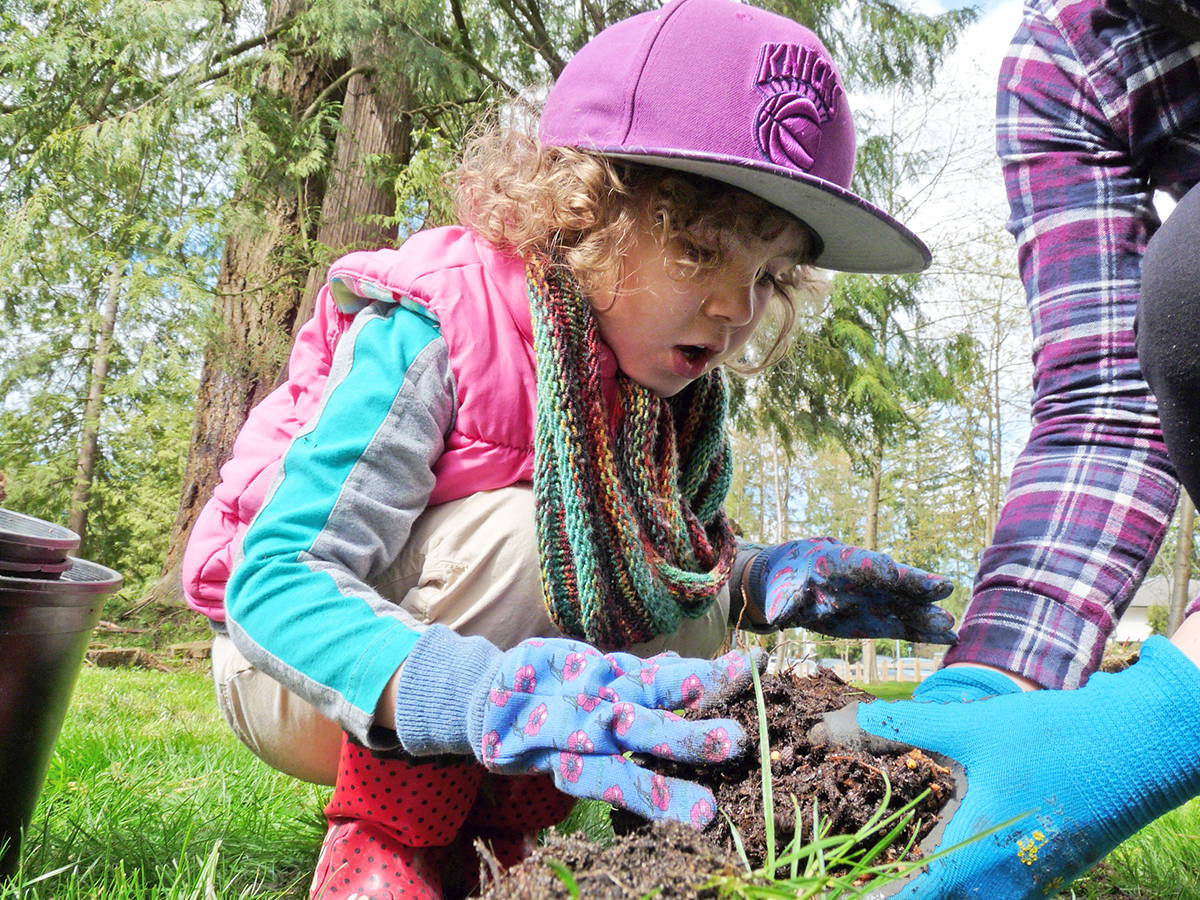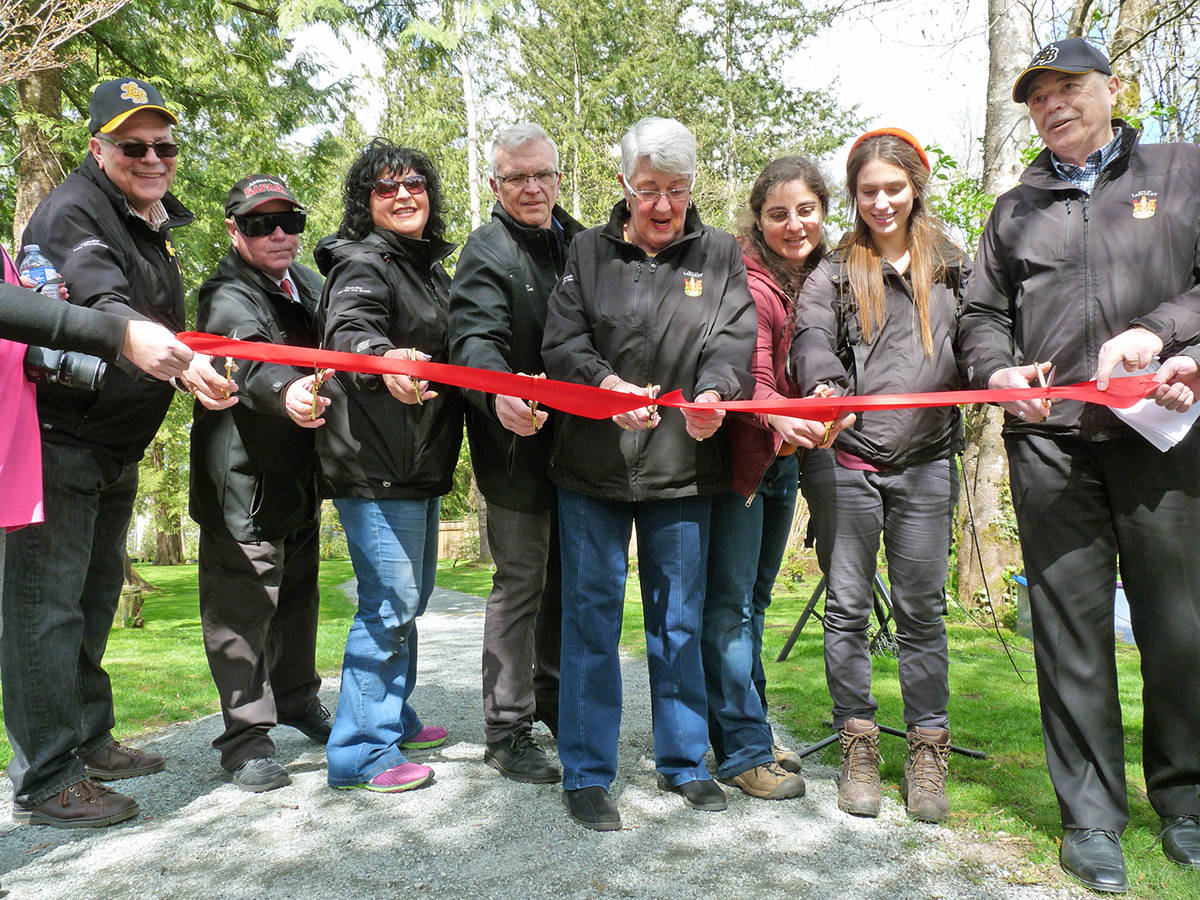“Don’t forget to massage the roots,” Jenna Calado reminded her six-year-old daughter Rosetta, as they dug up a small patch of dirt to plant some foliage in the re-opened Hunter Park on Saturday morning.
Neither was exactly sure why the roots required a massage, but the knowledgable people from the Lower Mainland Green Team (Green Teams of Canada), who were coordinating the planting bee, had said they should.
Mother and daughter were among dozens of volunteers and some members of Langley City Council who got their hands dirty at the official re-opening of the small City park at 19959 45B Ave., more than a year after the discovery of laminated root rot forced the municipality to cut down over 100 trees.
READ MORE: Root rot strikes Hunter Park trees
“There is a saying that it is an ill wind (that) blows nobody any good and nowhere is that more apparent than at Hunter Park,” mayor Ted Schaffer said at the ribbon-cutting ceremony with other members of council and the Green Team.
“This ill wind gave a group of private and municipal arborists from Langley City, the Township of Langley and City of Abbotsford an opportunity to use the site as a training ground to learn more about laminated root rot disease and the effects it has on the root system of fir and hemlock trees,” Schaffer said.
“Hopefully, the knowledge gained from the loss of these beautiful trees from Hunter Park will aid us in preventing damage to trees in other parks.”
The rebuilding of the park “has turned disaster into triumph,” Schaffer said.
There was also a pancake picnic party and live music from 10 a.m. to noon. at the City park event.
READ MORE: Fallen trees form new fence at Langley City park
The resurrected Hunter Park has a meandering gravel path, picnic benches and a low rail fence.
Some of the benches were made with wood recycled from the trees taken down last year.
All the firs and hemlocks in the municipal park were removed because the disease, also known as yellow ring rot, had been detected in several trees.
A visit to the park by the Times while the removal was underway showed freshly cut stumps of apparently healthy trees had dark stains in the core, evidence of infection.
In other fallen trees, the infection was more advanced and the interior was rotted out.
Council has been told it will be decades before hemlocks or firs can be replanted in the park.
The disease spreads through root-to-root contact between conifers and can remain viable for up to 50 years.
Trees that get the fungal pathogen phellinus weirii die from failure to take up water and nutrients because the main roots are decayed.
The rot is one of the leading causes of dead and wind-thrown trees.
Expert foresters recommend removing infected trees and susceptible tree species within a 15-metre radius.
People living near Hunter Park who had Douglas firs and western hemlock on their properties and had concerns about possible infection were advised by the City to seek professional advice from a local tree company or arborist familiar with the disease.
dan.ferguson@langleytimes.com
Like us on Facebook and follow us on Twitter

